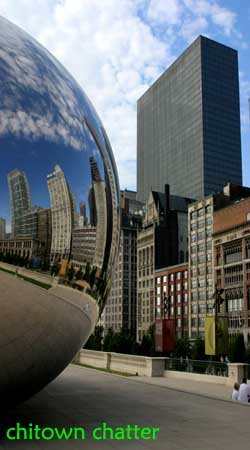Last Sunday, the Culinary Historians of Washington (CHoW) were having their annual potluck, and I tagged along with Liz to check it out. You may be wondering how many people could possibly be making their living as a culinary historian, but the group simply consists of history buffs and enthusiasts who are passionate about food.
The potluck was themed “Presidential Favorites,” so the night before, we searched online intensely for favorite recipes of our Commanders-in-Chief. This proved to be more difficult than I’d anticipated because cooking has evolved drastically in the last 200 years and historical recipes are often intractable. Pre-20th century recipes tend to use esoteric ingredients, require lots of labor, and have few measures for volumes, temperatures or cooking times. (“Now, set the wood-burning fire at 350°…”) After ruling out Nancy Reagan’s Monkey Bread (too long rising time) and James Garfield’s Squirrel Soup (squirrel hunting on the National Mall, anyone?), we decided to make Harry and Bess Truman’s Coconut Balls. This recipe was ideal because 1) it was a presidential favorite (not just First Lady), 2) came from the Truman Library website and seemed historically credible and 3) required only five ingredients and 15 minutes of baking.
Now, my first rule for potlucks is to never bring a dish that hasn’t been tested before. But we were running short on time, so an hour before the potluck was due to start, we hastily mixed a batch of coconut ball batter (basically coconut flakes and condensed milk) and threw them in the oven. The kitchen smelled great, deliciously coconut-y! Much to our dismay, upon removing the cookie sheets, we discovered that the coconut “balls” had spread to 3” in diameter, and were now an oddly shaped sort of macaroon-cookie, with crisp browned edges to boot. Egads. On the other hand, they still tasted great, and who knows, maybe that’s what they were supposed to look like in the 1940s. We tossed the coconut balls into a storage container and dashed for the train.
At the potluck, a vast array of dishes were spread out over two tables. These ranged from the familiar macaroni and cheese (served at Jefferson’s inauguration, and considered quite fashionable at the time), to more exotic items like pickled watermelon, tomato bread pudding and Harrison-era sliced tongue. There was a violet soup, garnished with freshly picked violets, and a Johnson-era canapé “cake” constructed of hors d’oeuvres on toothpicks. President Obama’s affinity for Mexican foods was celebrated with pork loin and homemade molé sauce (this takes a full day of roasting peppers and pressing them through sieves). Amy Carter’s favorite peanut butter cookies were available, and a veal & bacon pie modeled after Martha Washington’s recipe was on display. Amusingly, there was a definite bias towards dishes from Democratic administrations, and even scattered apologies from people who had brought Republican administration foods.
Alas, someone else had brought Harry and Bess Truman’s Coconut Cookies, and they looked much prettier than our offering. After eyeing the competition though, we decided that the coconut cookies were distinct from coconut balls, since the former had flour in the recipe and were clearly different. At any rate, by the end of the afternoon, all of our coconut balls were gone, while half of the coconut cookies were left over. Victory was ours! As an additional aside, while waiting in line for food, there were definitely some comments made about “Harry’s Balls.” It’s good to know that you’re never too old to joke about balls.
I sat down next to a gentleman who works for the Department of Energy, whose wife is currently writing a book on sugar. (Books on single products seem to be very trendy these days.) Unprompted, he began spouting facts on early scientific instruments like the polarimeter, and how taxation on goods often drives scientific innovation. Apparently, the British developed methods of determining the alcohol content of beverages in order to properly tax them.
The rest of the group was full of interesting, intelligent people as well. As we circled around the room, explaining our dishes, quirky debates would sporadically break out over say, the origins of “Philadelphia” cream cheese or the foundation of industrial celery cultivation in Kalamazoo. I heard the tale of Andrew Jackson’s cheddar cheese; apparently a farmer from upstate NY gifted him a 2-ton wheel of cheddar, which he aged for two years and then set in the foyer of the White House. Anyone who could travel there was invited to partake, and the cheese was demolished in about two hours. And it was a good thing we put some effort into historically accuracy because some people had brought in copies of original, handwritten recipes on index cards. The woman who brought in cheese stick crackers said that she gave careful consideration to the type of cheese that she should use (cheddar, or rat cheese, as it was known in the ‘50s?) and how to replicate low-gluten Southern flour (3 parts cake flour to 1 part all purpose). Meanwhile, someone else apologized for “cheating” and using Knox gelatin, instead of boiling beef bones and using egg whites to capture the impurities. When it came to our turn, Liz took the reins in explaining our coconut balls, and someone quipped, “No wonder the Puerto Ricans were shooting at Truman, he was taking all their coconut!”
Needless to say, the first thing I did when I got home was look up the Culinary Historians of Chicago chapter.
Subscribe to:
Post Comments (Atom)








No comments:
Post a Comment